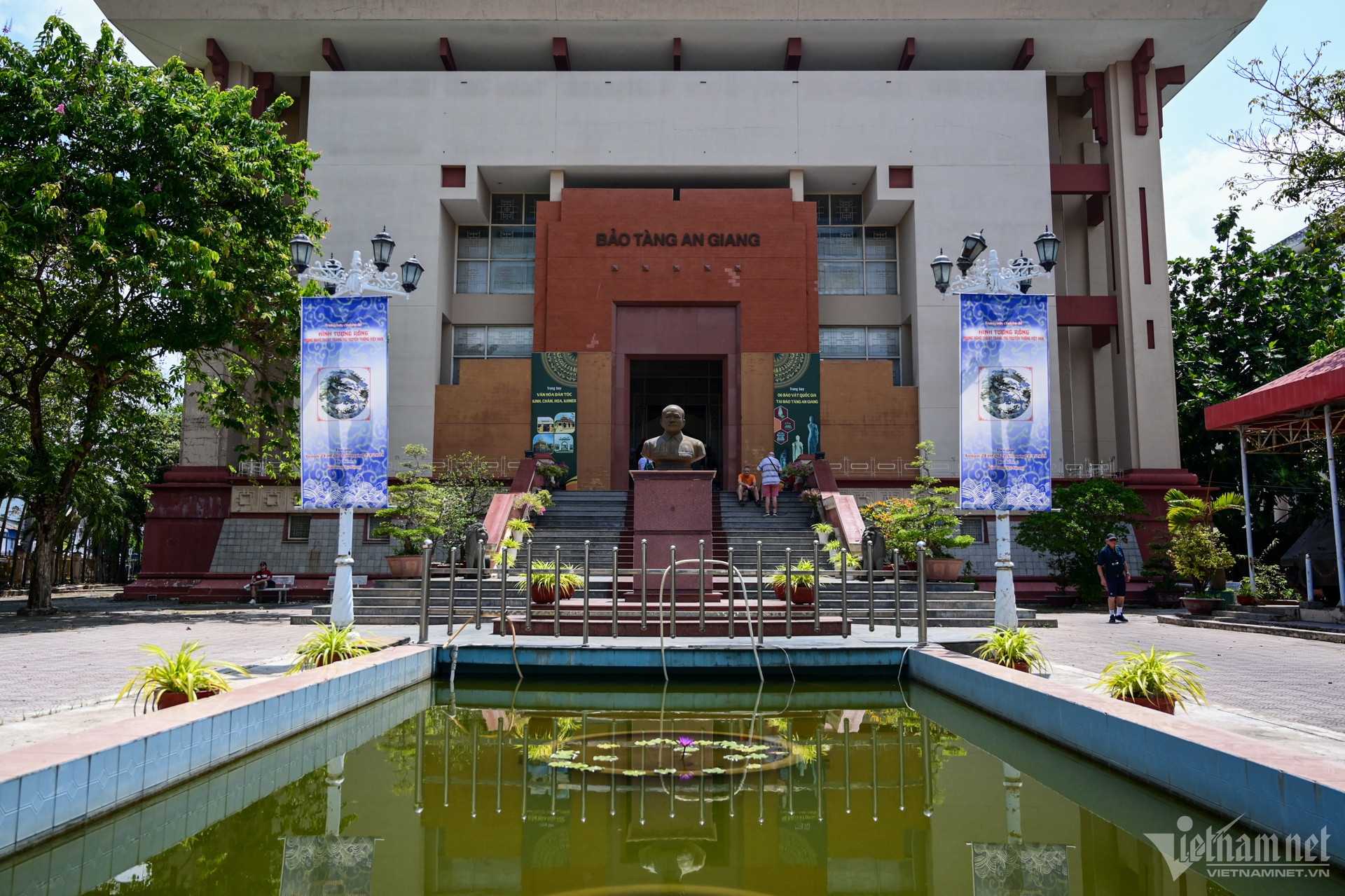
Currently, An Giang province houses eight national treasures from the Oc Eo culture, which dates back over 3,500 years. Two of these artifacts are preserved at the Oc Eo Cultural Exhibition House in Thoai Son district, while the remaining six are on display at the An Giang Museum in Long Xuyen city.
The Oc Eo culture, part of the ancient Funan Kingdom, is among the earliest formed states in Southeast Asia, dating from the 1st to the 7th century AD. The first relics were discovered and excavated by French archaeologist Louis Malleret at Oc Eo mound in Vong The commune, Thoai Son district, An Giang province, in 1944.
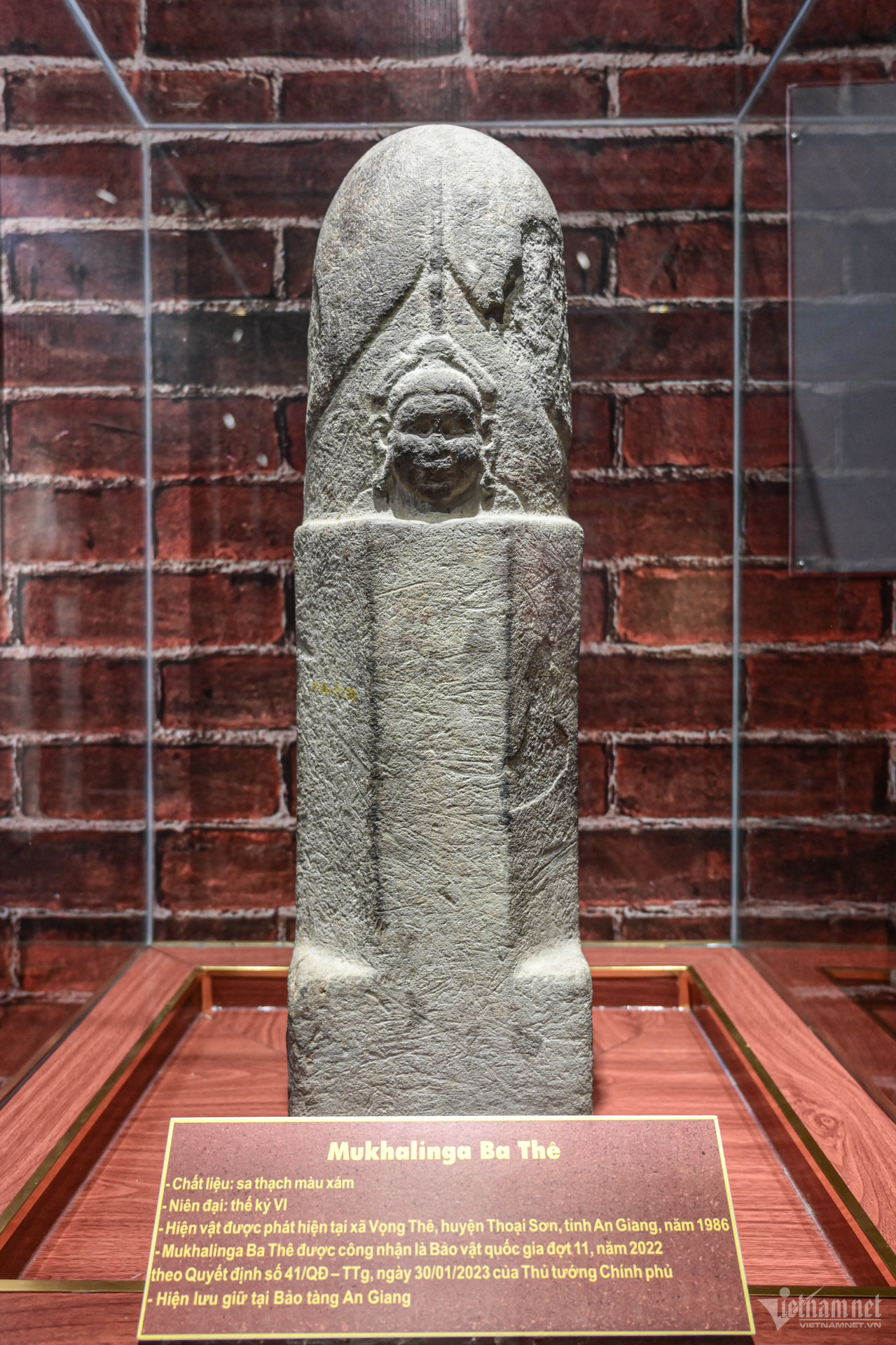
Mukhalinga Ba The is the earliest artifact depicting the "mukha" symbol in Oc Eo culture in Southern Vietnam. Recognized as a national treasure in 2023, this statue dates back to the 6th century. It is made of fine-grained gray-black sandstone, with a patina surface, standing 91cm high and 20-22cm wide.
In Sanskrit, "mukha" means face. A Mukhalinga is a linga with a face. The top of the artifact has a cylindrical shape, symbolizing a phallic form. The middle features a relief of the head of Shiva, while the bottom is a square cylinder with smooth, balanced surfaces.
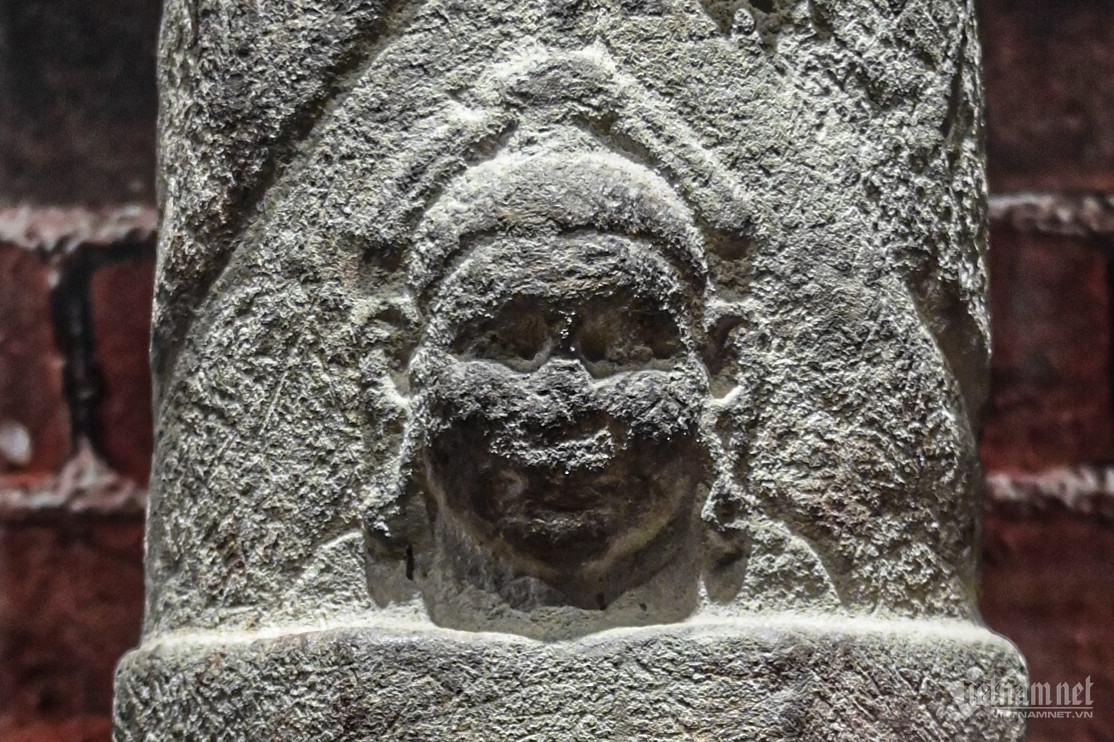
This unique linga's sculpture prominently features the mukha symbol in the center, showcasing the strong influence of Indian culture and reflecting the long-term and vigorous cultural exchanges between the Oc Eo and Indian civilizations.
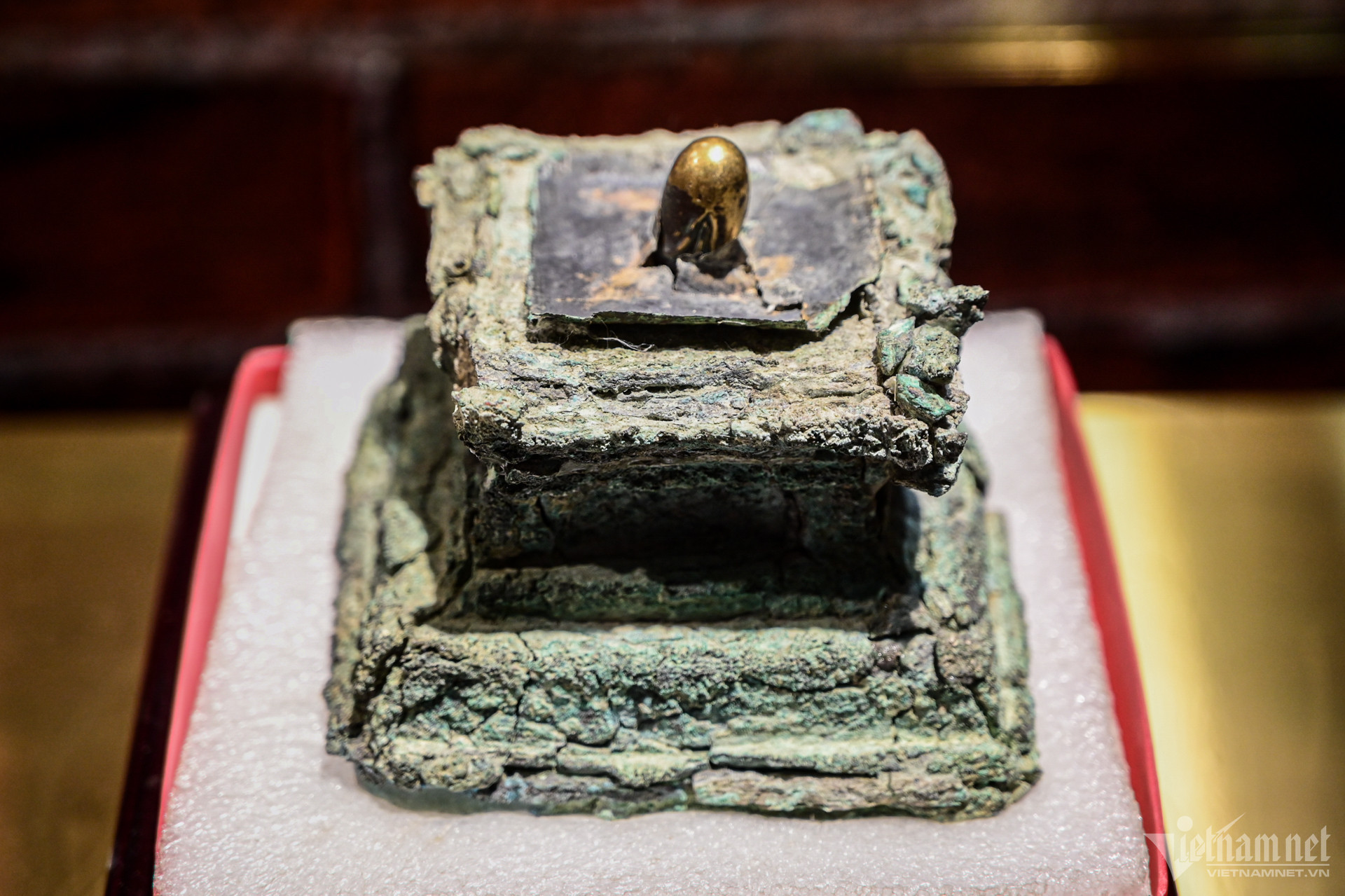
The Linga-Yoni set (representing male and female genitalia) was discovered during the 1985 excavation of Da Noi site and recognized as a national treasure in 2018. This is the only Linga-Yoni set made of gold and brass, composed of multiple parts unified together, dating back to the 5th-6th centuries.
The artifact measures 10cm in height, 12.2cm in width, and weighs approximately 2.6kg. The symbolic, dynamic arrangement of the linga piercing through the yoni exemplifies both religious content of Hinduism and the creative artistic decoration skills of the craftsmen.
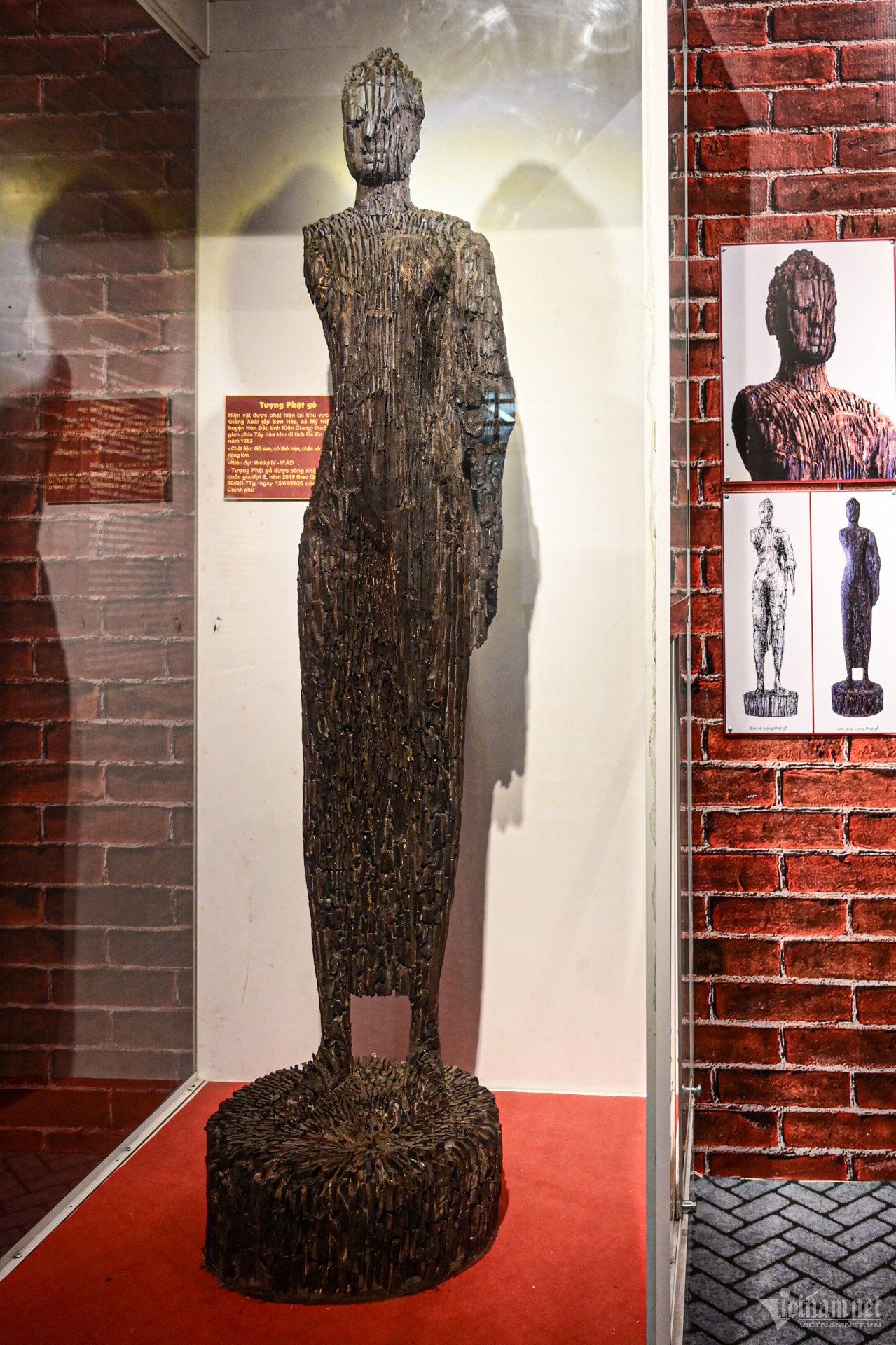
The Giồng Xoài Buddha statue dates from the 4th-6th centuries and is carved from a single piece of sao wood, standing 2.7 meters tall and weighing 94kg. It was recognized as a national treasure in 2019.
The statue depicts the Buddha standing on a round pedestal without decoration. The right arm is broken up to the shoulder, and the left arm is missing the hand. The face is square with a strong jaw, the hair is curly, rising in a spiral on top of the head. The robe covers from the left shoulder down to the feet, though it is broken in many places, with only parts visible over the left arm and between the legs.
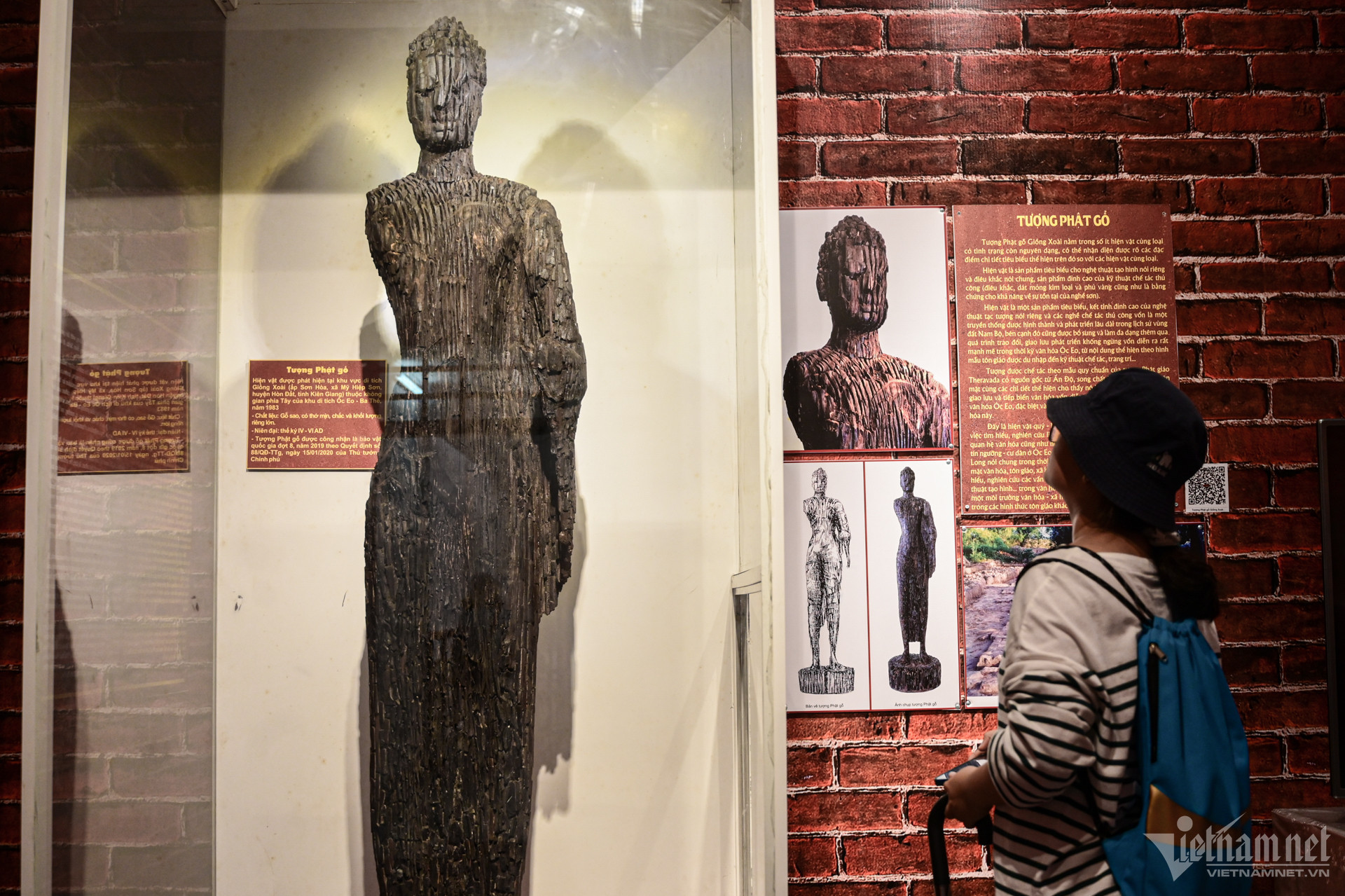
Crafted according to Theravada Buddhist standards originating from India, the statue's material, facial features, and details show it as a product of the vigorous cultural exchange and adaptation during the Oc Eo period.
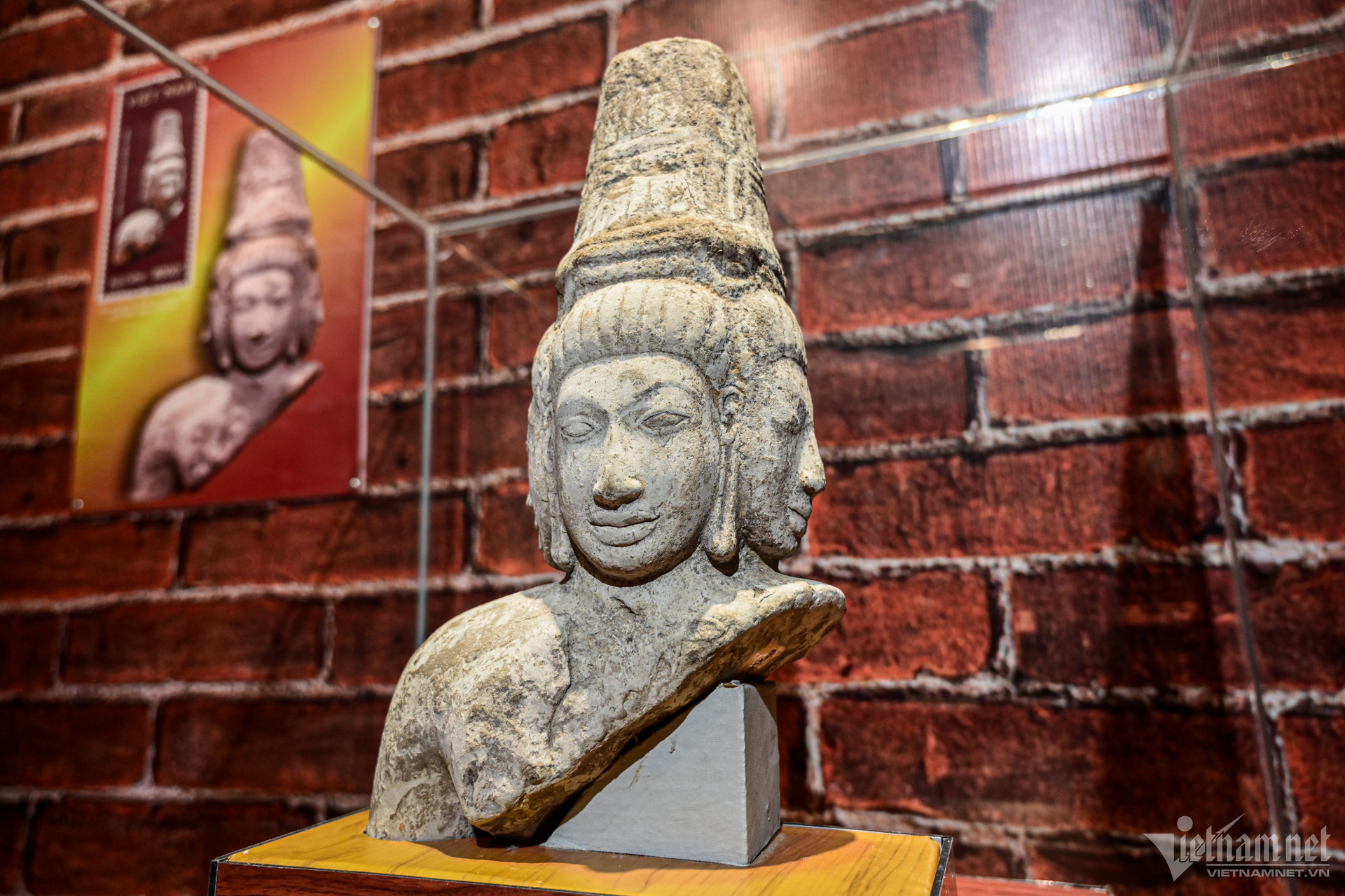
The Giồng Xoài Brahma statue, discovered in 1983 at the Giồng Xoài site, dates back to the 6th-7th centuries. It is the earliest and only Brahma statue from the Oc Eo culture that remains today.
The Brahma statue is a round sculpture with four faces (one heavily worn), hair tied high with three knotted sections, and delicate U-shaped curls hanging on both sides. The Brahma statue from Giồng Xoài is an artistic masterpiece, reflecting clear Indian-European artistic characteristics.
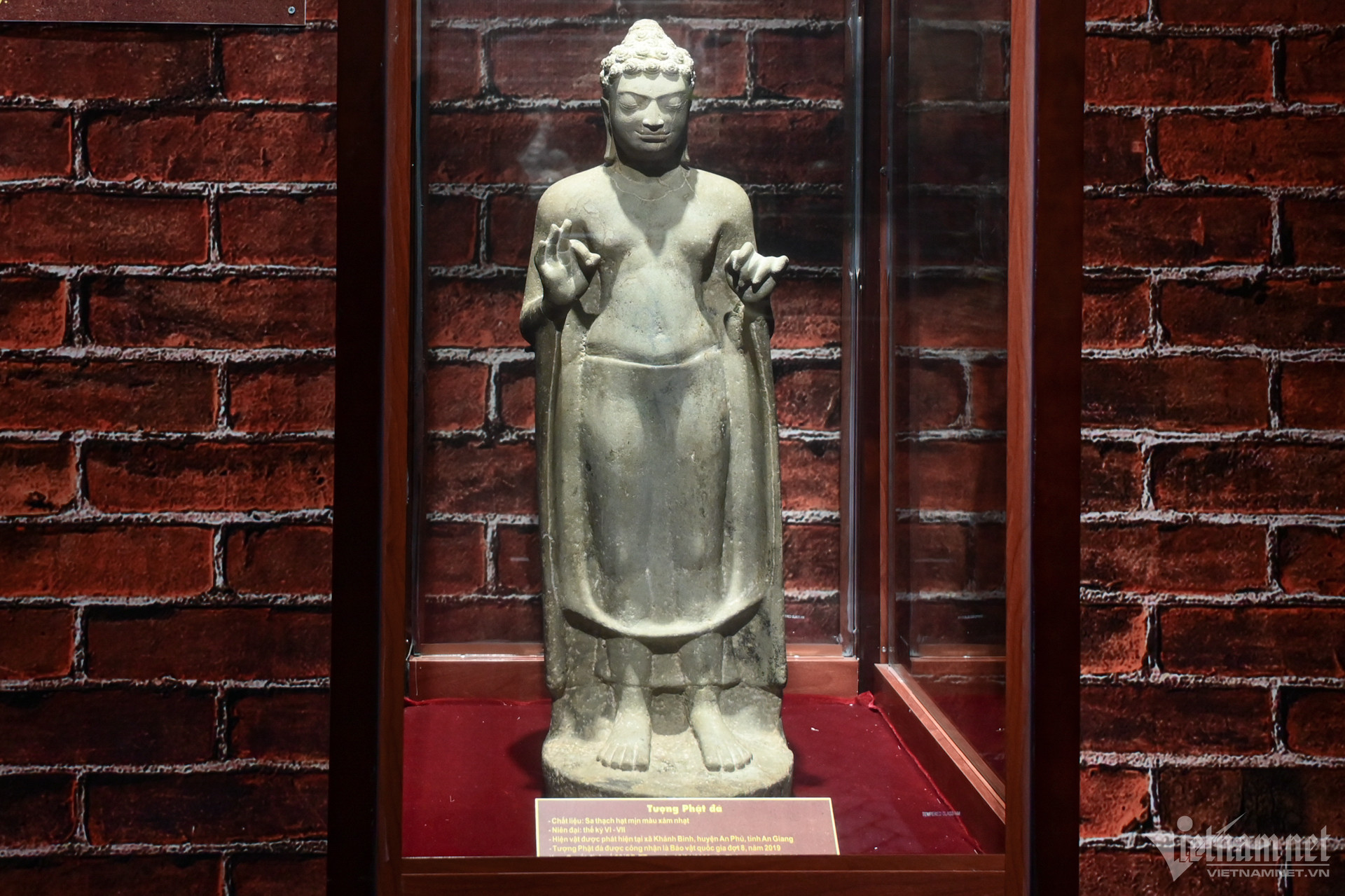
The Khánh Bình Buddha stone statue stands 71.2cm tall, with the thickest part at the belly measuring 12.1cm, and weighs 33kg. It is a fully crafted round statue from a large, solid sandstone block, depicting the Buddha standing straight (abhanga) on a simple round-edged pedestal.
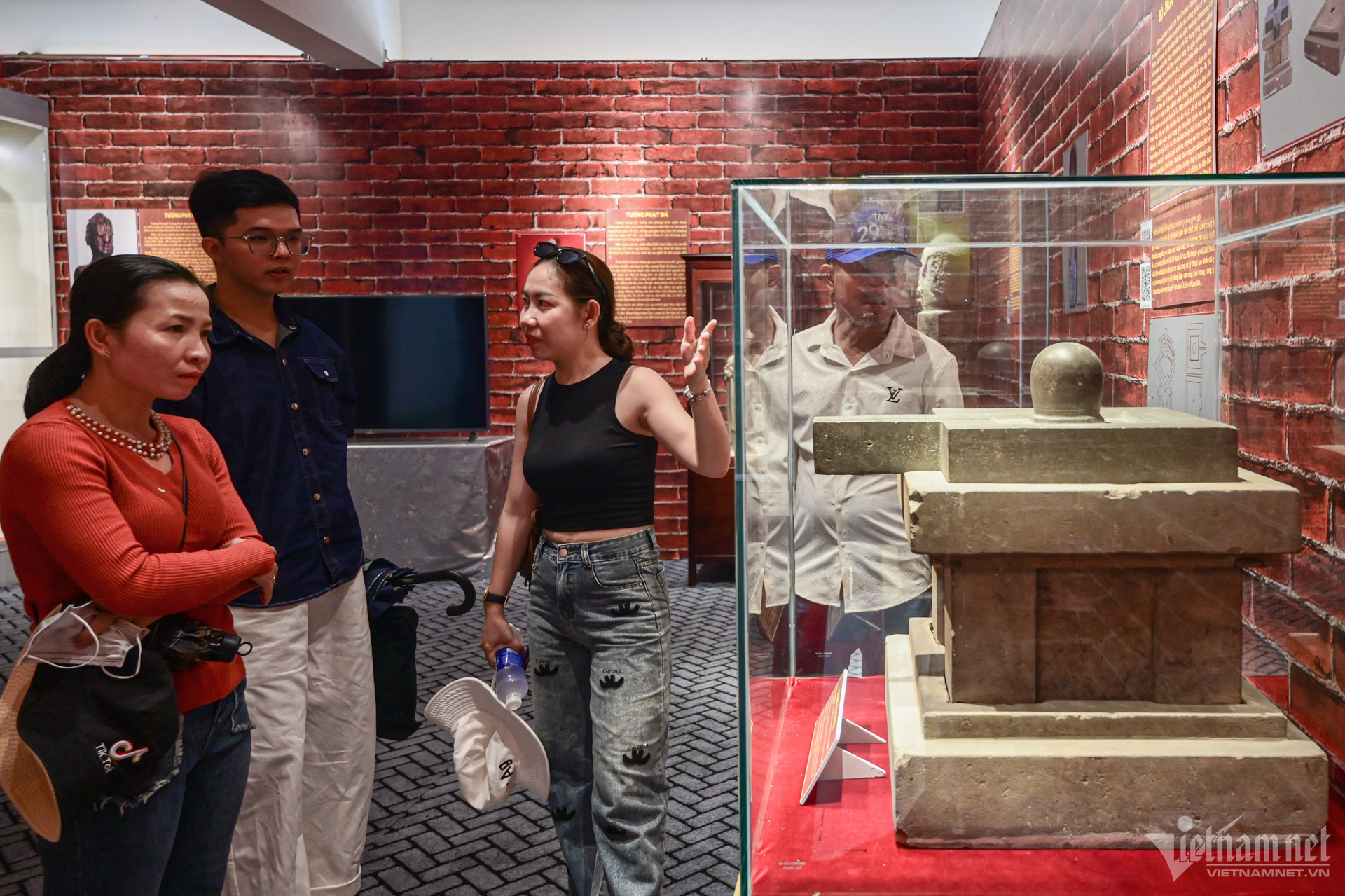
The Linh Sơn Linga-Yoni set, discovered in 1985 at the Linh Son pagoda area in Thoai Son district, dates back to the 7th century and was recognized as a national treasure in 2020.
The artifact combines two different types of stone materials, creating a striking aesthetic and a sense of centrality, making the linga-yoni stand out prominently when placed on the elaborately crafted pedestal. It represents a significant example of the Funan Kingdom's sculptural art, with distinctive features alongside clear influences from Indian religious content received through extensive cultural exchange and adaptation.
 |
 |
 |

The museum also hosts numerous other Oc Eo cultural artifacts, along with various documents, artifacts, and photos showcasing Vietnam's heroic struggle, diverse cultural heritage, and the development of An Giang province.
Thao Trinh